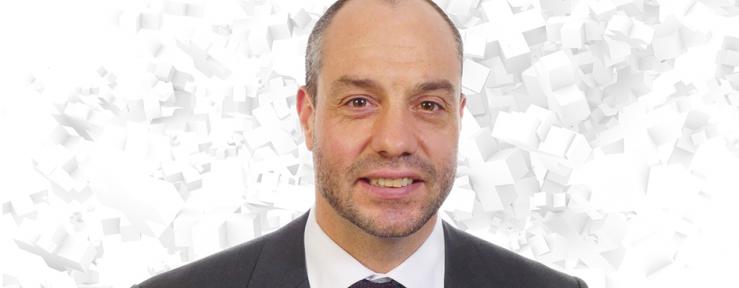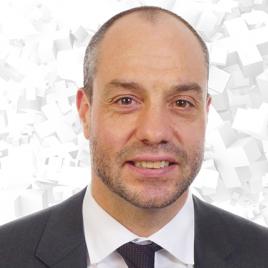S-GE: There are businesses that miss the right timing for making decisive changes. How did Ifolor manage to recognize the new challenges earlier than the competition?
Filip Schwarz: My father sensed that something was going to change, but he didn't know exactly what. He used the "solution-independent customer problem" approach as a guide, and considered the question of what really makes our company what it is – what is the customer really paying for? Many companies have used this method. For instance, Hilti, which was previously known as a drill manufacturer, is now a provider of fastening technologies, i.e. adhesives. For Ifolor, the concern isn't photos per se, but holding onto memories, making it possible to relive them and to share them. After this recognition, there was the question of what technology can satisfy this need. The answer was digital photography, a shift from film and film developing to digital products. We orient ourselves around this solution-independent customer problem, not around a particular technology. The business has stayed the same: holding onto memories and emotional moments and making it possible to relive them.
How did you manage this shift?
By organizationally separating the new and the old business. When new ideas come up in a company, there's a tendency to put the best, most experienced experts on them. However, those experts will often decide that new developments aren't appropriate and will never be successful. In terms of our business, I should mention that the quality of the first digital photos was actually not particularly impressive. When the development manager saw these photos, he thought that such junk would never catch on. Due to the fact that the judgments of veteran personnel have quite a bit of weight in most companies, many developments are blocked from the very beginning. So we came to the conclusion that we should separate old and new business. We wanted to continue doing the old business to the best of our ability as long as there was still demand. In addition, we looked for people who were ready and excited to give their all to the new business. At some point, the personnel from the old business had to shift into the new business or re-orient themselves.
How did the shift to digitization change the structures in your company?
We became a completely different company. We used to develop film; today, we develop software. That's the best way to describe the difference. We massively expanded our marketing and development areas. Now, more than 10% of Ifolor's personnel work in IT, and even more work in marketing. Our Swiss workforce grew from 110 to around 180; we have 280 employees worldwide.
Did the shift from analog to digital change your company's earnings model?
The new digital business model of the online shop allows us to do significantly more scaling than we could with physical products. The fact is that digitization has made us a lot more successful. As to new developments, we'll certainly have to sound out exactly where we'll position ourselves alongside the iPhone or iMac.
In terms of internationalization: Did restructuring the business model drive Ifolor's internationalization, or did internationalization drive the restructuring of the business model?
The first – restructuring our business was the clear driver of internationalization. In a B2C business like ours, the brand plays a central role. If the brand isn't known, things will be extremely difficult. That's the reasoning behind our international acquisitions; to ensure from the start that there's a certain brand strength and customer base as a foundation for expanding the company. In a new market, a business has to achieve a market share of at least 15% in a relatively short period of time. Studies show that when substitutions like this come along, that is to say new trends, a maximum of seven market players will survive. If a business doesn't see an opportunity to achieve this 15%, then they'd be better off stopping the project.
Were these your considerations when you were evaluating markets like Germany and Finland?
Yes, we analyzed the market shares that were realistically achievable. And we will continue to use this criterion in choosing new markets.
What are the differences among the various markets in terms of demand?
We observe various dynamics. In Scandinavia, photos as a stand-alone product are in much greater demand than, for instance, in German-speaking countries. On the other hand, ordering via mobile phone is much more widespread in Scandinavia than it is here. In terms of earnings, the tax burden is a relevant issue for markets. For instance, in Switzerland we have a special tax for books of 2.3%; in Germany, there is a value-added tax of 19% as of 2017. These are enormous differences.
Do you adjust your business model to the differing conditions in various markets or do you apply the same business model everywhere?
We try to apply our business model with as few adjustments as possible. We do not tolerate any deviations from our standards in terms of the brand, services or relationship to the customer. That applies to all of our markets.
You mentioned that you will continue to choose new markets based on the 15%-market-share rule. What markets do you have your sights set on?
There's a long list of interesting markets. England, France, Italy or Austria, for example. In all cases, we have to look very carefully to see if we can achieve a 15% market share. If a business can't reach this threshold, then they have to have the courage to pull out of the market. We did that in Denmark.
You're not thinking about markets outside of Europe?
I wouldn't say that. India, for instance, has a very interesting photo album market – the focus is on weddings. Or China, where photo albums are very widespread.
Do companies need to consciously develop their business models, as Ifolor did, in order to be internationally successful?
Absolutely. The central success factor is employees who have the ideas and the vision in their blood. Such employees have to work with new ideas for two or three years at the headquarters in close cooperation with the key players and truly absorb them before they can be sent abroad. The key success factor is having the management skills to choose people who have this spirit. That takes planning. We know how many people like that we have and we can calculate the number of projects we can count on. This applies to every industry and to companies of every size.
What is your advice for internationally active SMEs whose industries are facing major upheaval?
The Internet revolution is just beginning. Today, Ifolor generates 99.5% of its revenue online, but we're an exception. Many companies are just at the start of such changes. For instance, where does Rolex sell its watches today? Definitely not online. Many companies are also lacking the good people who know how to build a digital business. So, my recommendation to companies that have yet to make this first step: Get the best people early on. Bet on the digital sales horse before the race is run. Getting an early start is the key to winning the battle. And: The winner takes all.
Ifolor
ifolor makes it possible to relive your best moments with personalized photo products. The international online service provider's offering comprises high-quality products such as photo albums, photo calendars, photo greeting cards, wall decorations, photo gifts and photo prints. Founded in 1961, ifolor is a family-owned enterprise that employs some 250 people and earns more than 100 million Swiss francs per year. ifolor is active in ten countries and is a market leader in Switzerland and Finland. The company's high-quality products are produced at the Swiss headquarters in Kreuzlingen am Bodensee and in Kerava, Finland. www.ifolor.ch
Filip Schwarz
Filip Schwarz has been leading the Ifolor Group since the beginning of 2015. Formerly the Chief Marketing Officer, he replaced Helmar Hipp as CEO. The father of the current CEO, Phillip Schwarz, is now President of the Advisory Board.
Tips, topics for discussion and events around the issue of business models in exporting
In 2017, Switzerland Global Enterprise is focusing on the topic of "Rethinking business models: the international competitive advantage of the future" in order to support, inform and connect Swiss SMEs so that they can meet current challenges in international business. Check our dossier for regular updates including new articles, videos and studies on this topic. Register for a monthly update in our Export Newsletter and <b> reserve a ticket now for May 18, 2017 at the Forum for Swiss Foreign Trade "Rethinking business models: the international competitive advantage of the future.







